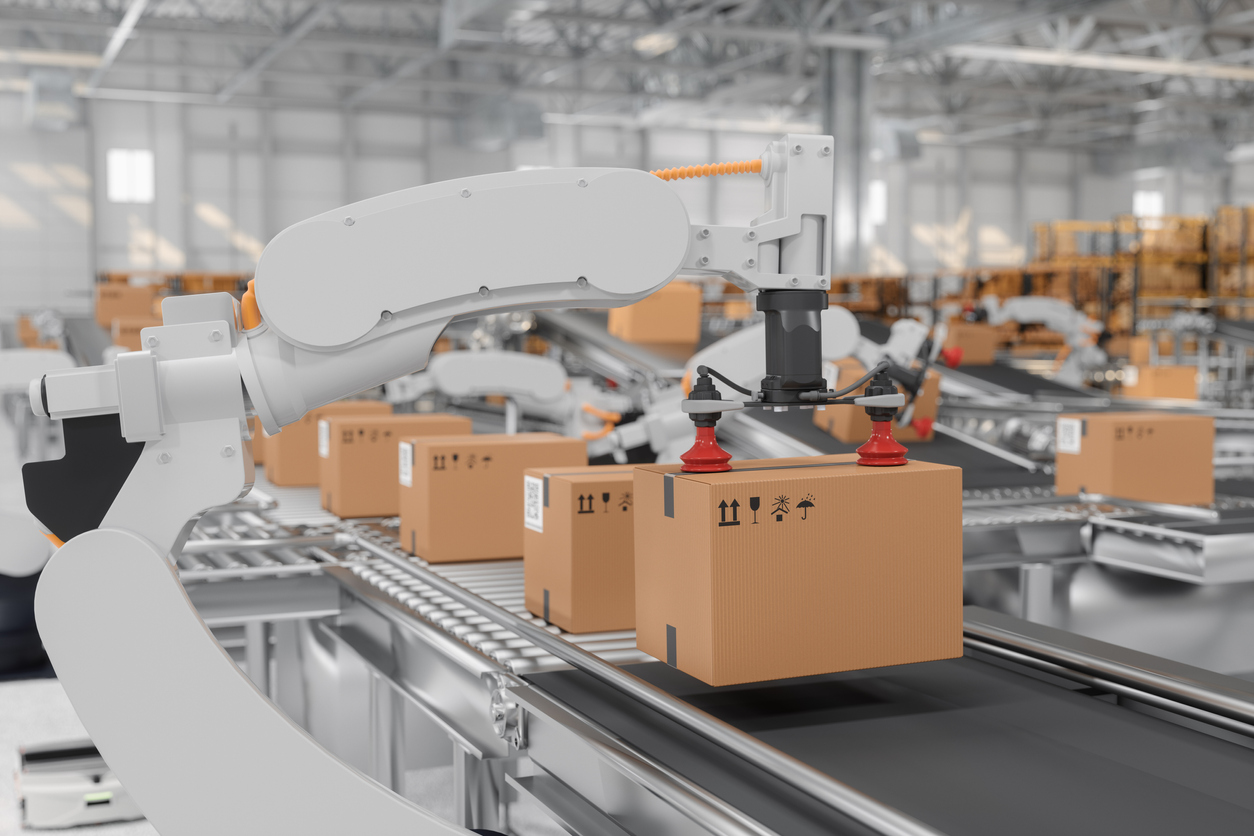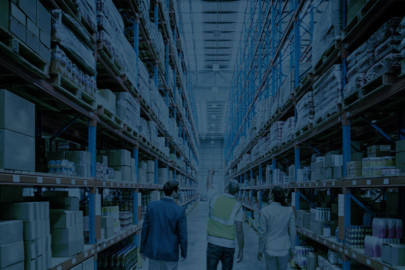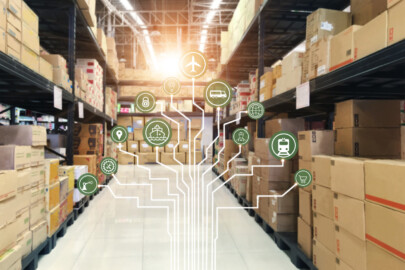Advanced 3PL Dynamics for Multichannel Fulfillment
Technology has changed how consumers and businesses shop. They may use traditional retail outlets, digital marketplaces, and online stores. Yet, they expect their purchases to arrive on time regardless of the shopping channel. That expectation can be challenging for sellers unless they have a logistics partner to help manage and optimize their supply chain.
Effective multichannel fulfillment strategies are crucial to remaining competitive in today’s dynamic marketplace. These strategies demand a more integrated relationship to handle the complexities of delivering a seamless customer experience. According to McKinsey, organizations wanting to achieve supply chain superiority must develop a customer-centered strategy that does the following:
- Provides fast and flexible infrastructures
- Encourages collaboration throughout the supply chain
- Uses technology to improve operations and gain insights
Companies must build resilient supply chain processes with effective information flow that support multichannel fulfillment to sustain growth.
Build Fast and Flexible Infrastructures
Speed has become an essential component of any customer-centered fulfillment strategy. To make same- or next-day delivery possible, third-party logistics (3PL) providers must create infrastructures with multiple distribution centers located near primary markets. A centralized distribution center where all inventory is stored is no longer viable.
Distributed Warehousing
Adding warehouse capacity by creating strategically spaced distribution centers is easier said than done. Warehouses are at or near capacity. Recent reports found that 26% of stand-alone distribution centers are operating at 50% to 75% capacity, while 28% are operating between 80% and 99%. With minimal availability, 3PLs lack the flexibility needed to meet demand.
However, finding or building warehouse capacity during inflationary periods is risky. Companies look to conserve cash by cutting expenses. Paying a premium for added warehouse capacity will add to monthly expenditures. Higher interest rates can make building new facilities cost-prohibitive.
Instead of expanding, 3PLs need better inventory management to maximize every square foot of space. They need to explore partnerships that allow inventory to be spread across the supply chain.
Multichannel Fulfillment
Each sales channel has different delivery requirements. Moving inventory from a warehouse to a local retail store is usually planned well in advance, with most shipments being delivered by truck. Items purchased in stores have a scheduled delivery date and time. Waiting days or even weeks for delivery is not uncommon.
E-commerce purchases come with a different set of expectations. Consumers want options such as home delivery or in-store pickup. They may even want a purchase delivered to a third-party locker that’s available 24/7. Most importantly, consumers want online purchases fast.
Integration
3PLs and their customers need an integrated approach to multichannel fulfillment. Blending traditional with eCommerce fulfillment takes a system built with flexibility in mind. 3PLs must have an infrastructure that can respond to varying transportation requirements while remaining cost-competitive.
Supply chain logistics has grown to include specialized services. For example, “try before you buy” offers require delivery and possibly pickup of anything from mattresses to kitchen appliances. 3PLs must be able to collect merchandise that is being returned. They are also being asked to manage the reverse logistics of online returns. These changing dynamics require a flexible infrastructure.
Partnerships
Managing the dynamics of multichannel fulfillment requires partnering with customers and possibly competitors to meet consumer expectations. Leveraging competitive strengths enables 3PLs to focus on core competencies without compromising services.
For example, working with another 3PL that specializes in “try before you buy” logistics may be the most cost-effective approach to providing a rarely-used service. The goal is to transform the existing supply chain infrastructure into a system that operates seamlessly.
Create Collaborative Supply Chains
Supply chain collaboration means redesigning processes to encourage communication. 3PLs need a culture that allows cross-functional communication throughout their network. They also need processes that allow collaboration with customers and partners. Without transparent communication, 3PLs can’t address the changing dynamics of today’s supply chain.
Communication
As 3PL networks become more distributed, communication becomes a critical component of effective operations. For example, 3PLs need a process to manage inventory across multiple channels. Logistics providers may warehouse customer inventory in multiple locations to facilitate fast delivery requests. Unless there is a clear communication process, no one has a comprehensive reading of the total inventory.
Each node in a 3PL network needs to report inventory status. The information should be available to everyone. From shared data, account managers know how the inventory is distributed and can help adjust levels to meet demand. Employees tasked with product delivery to retail stores can view the inventory in each location to ensure products are transported from the closest warehouse to minimize transportation costs.
Supply chain end-to-end communication enables 3PL partnerships to address the changing dynamics of multichannel deliveries. Keeping customers informed allows them to pivot if market demands change. It enables partners to adjust so delivery can continue to happen seamlessly.
Collaboration
End-to-end communication encourages collaboration. Exchanging ideas based on shared data creates an innovative culture where out-of-the-box thinking thrives. This creative environment adds to the transformation capabilities of 3PLs needed to compete in the industry’s changing dynamics.
For example, transforming a traditional logistics business model can be disruptive. Attempting to merge e-commerce requirements can prove disastrous if the process is not well-designed. Collaboration enables incremental changes to occur as part of an overall plan that is known throughout the supply chain. As the process progresses, collaborative teams can assess how the changes impact operating dynamics.
Collaboration gives 3PLs insight into the entire supply chain without adding to existing workloads. Instead, companies can leverage the information gained through delivery channels to adapt to market changes. Exchanging data increases the information available for analysis and decision-making.
Deploy Advanced Technologies
Technology enables 3PLs to meet the challenges of the industry’s changing dynamics. Leveraging technology can help organizations maximize warehouse space, reduce labor-intensive tasks, and make data-informed decisions. Deploying technology that helps automate operations and capture data can assist logistics providers in building flexible infrastructures and creating collaborative cultures necessary for sustained growth.
Automation
Existing market pressures are forcing the 3PL industry to look at automation for solutions that facilitate faster delivery, reduce labor requirements, and maximize storage space. In fact, the warehouse automation market is expected to grow by 15% per year through 2027. Among the available automated solutions are the following:
- Mobile Robots
- Modular Solutions
- Internet of Things (IoT)
Mobile Robots
Traditional automated storage and retrieval systems require alterations in existing warehouses to accommodate the technology. Mobile robots do not. Eliminating the need for costly modifications, automated guided (AGR) and mobile robots (AMR) can work with human counterparts to increase safety and productivity.
AGRs automate manual equipment used in moving goods within a warehouse. They can operate forklifts, towing machines, and conveyors. Some solutions can be retrofitted to work with existing equipment or be activated when necessary.
AMRs are flexible, allowing them to pick and sort items within the warehouse. 3PLs must balance the time required to move goods to maximize storage space. Often, incremental improvements are ignored because of time and labor costs. AMRs allow warehouse managers to move items for better space usage.
Modular Solutions
A limiting factor in deploying technology is its limited lifecycle. More automated solutions are being designed for better plug-and-play solutions. Instead of proprietary hardware and software, technology companies are developing platform-independent solutions that allow companies to scale without replacing existing technology.
Other providers offer robots as a service where the technology is operated from the cloud by a third party. As with many solutions within the technology sector, the “as-a-service” model allows businesses to access the latest technology without incurring the upfront expense. Access to affordable technology changes the industry’s dynamics as the market becomes more competitive.
Internet of Things (IoT)
IoT solutions have moved beyond a device that senses changes in temperature or environmental conditions. Today’s solutions allow warehouse operations to connect multiple solutions, such as inventory, mobile robots, and handheld devices, in real-time. Sharing data allows companies to react quickly to disruptions and minimize the impact on the consumer.
IoT capabilities create a holistic view of performance. They can track statuses and monitor operations. They capture data — lots of data — that can be analyzed to deliver insights to improve operations.
Information
Software systems help 3PL providers manage inventory and warehouse operations. They can integrate with e-commerce platforms for faster order processing. Back-end solutions can facilitate payment and invoicing. Software can enhance productivity across the supply chain.
These solutions capture data that can be used to improve operations. For example, using IoT-captured data, predictive models can forecast potential equipment failure. These models assess the number of operations, environmental conditions, and frequency of routine maintenance to alert personnel to at-risk failures that could disrupt operations.
Predictive modeling can analyze data to identify trends in shipping delays, fluctuations in inventory, and market changes. This information can be used to make informed business decisions. Analytics can provide insights into supply chain performance or customer behavior. Armed with verifiable data, 3PLs can feel comfortable in their approach to advanced dynamics.
Plan for the Future
Having 3PL partnerships that offer flexible infrastructures and deploy advanced technologies ensures seamless delivery beyond today’s market. Working with companies that create a collaborative environment enables transparency in operations. When looking for a 3PL partner, be sure to plan for future dynamics. Contact us to learn more about how Symbia Logistics can help you compete in today’s market while ensuring a competitive advantage for the future.









